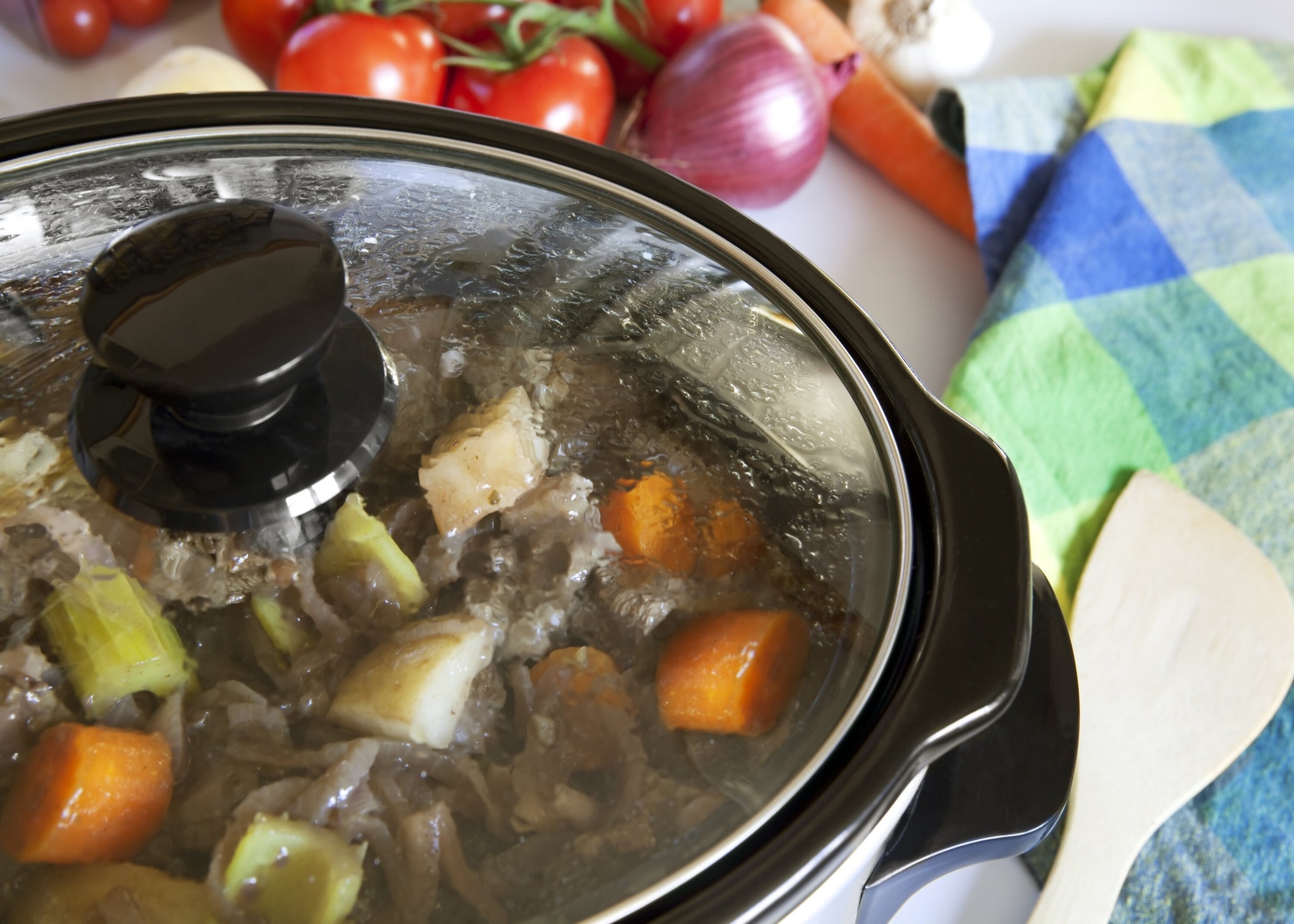Use slow cookers properly to avoid food-borne illness
Published 4:37 pm Wednesday, February 2, 2022

- Slow cookers can make meals and snacks simple and convenient, but cooks should be mindful of basic food safety guidelines no matter the dish. (Photo by Can Stock Photo Inc./robynmac)
|
Getting your Trinity Audio player ready...
|
By Susan Collins-Smith
MSU Extension Service
RAYMOND, Miss. — Slow cookers are winter workhorses in many kitchens, helping serve everything from breakfast to dinner. But no matter the dish, cooks should be sure to follow some basic food safety guidelines.
When used properly, these small, countertop appliances are safe and convenient.
“Slow cookers cook foods slowly at a low temperature, generally between 170 and 280 degrees, over several hours,” said Natasha Haynes, a family and consumer science agent with the Mississippi State University Extension Service in Rankin County and host of the Food Factor. “The combination of direct heat from the cooker, lengthy cooking time and steam destroys bacteria, making the slow cooker a safe way to cook foods.”
The same general food safety rules apply no matter what cooking method is used — clean, separate, cook and chill.
Start with a clean cooker, hands, utensils and surfaces. Wash hands after handling raw meat. Keep raw meats and vegetables separate and in the refrigerator until time to prep them or start the slow cooker. Use a food thermometer to ensure foods cook to the proper temperatures. Refrigerate leftovers within two hours.
Make sure to use the correct size of slow cooker and do not overfill it. Foods may not reach the proper temperatures in an overfilled cooker, leading to food-borne illness. Follow the manufacturer’s instructions and recommendations for how full to fill the cooker.
Haynes said that when buying a slow cooker, family size and leftover preferences are important considerations.
“If you’re cooking for one to two people and don’t want leftovers, a 3-quart or 3.5-quart is just right for you,” she said. “While many slow cooker recipes are written for larger cookers, most recipes can be scaled down or cut in half to be made in a 3-quart cooker.
“If your household includes three or four people, or you’re a couple who loves leftovers, a 5-quart slow cooker is an ideal size for you. This moderate size accommodates everything from soups and stews to chilis and casseroles,” Haynes said.
Liquid makes the steam that allows food to reach the proper temperature.
“When cooking meat or poultry, the liquid level should cover the ingredients to ensure effective heat transfer through the slow cooker,” Haynes said. “Some manufacturers of slow cookers recommend adding liquid to fill the stoneware one-half to three-quarters full. Always follow the manufacturer’s recipes and directions for the best results.”
Janet Jolley, an Extension family and consumer science agent in Marshall County, said cooks should always be mindful of the temperature danger zone, which is between 40 and 140 degrees. Bacteria that can cause food-borne illness can grow rapidly in this temperature range. Cold foods should be stored at or below 40 degrees, and hot foods should be held at or above 140 degrees.
Foods should always be thawed before cooking them in a slow cooker, and leftovers should never be reheated in a slow cooker.
“Slow cookers are not made to move food through the temperature danger zone quickly,” Jolley said. “Foods should reach 140 degrees within two hours. Frozen foods will take a long time to move from 0 degrees to 140 degrees, giving bacteria plenty of time to multiply.
“For the same reason, it is best to reheat foods on the stovetop or in the oven or microwave,” Jolley said.
Never use the warm setting to cook food.
“The warm setting is safe to use for four hours once the food is cooked,” Jolley said. “It will only keep the food warm and should not be used for cooking or reheating foods. The warm setting temperature varies on each slow cooker. To keep food safe on the warm setting the food must remain above 140 degrees.”
Slow cookers are ideal for cooking more economical cuts of meat, such as chuck steak, beef short ribs, beef brisket, lamb shanks and pork shoulder. The low, slow cooking method tenderizes these tougher cuts.
Desserts, baked potatoes, casseroles and breakfast dishes are also easy to make in the slow cooker. For a variety of slow cooker recipes, check out the food section of the Extension for Real Life blog at http://extension.msstate.edu/





